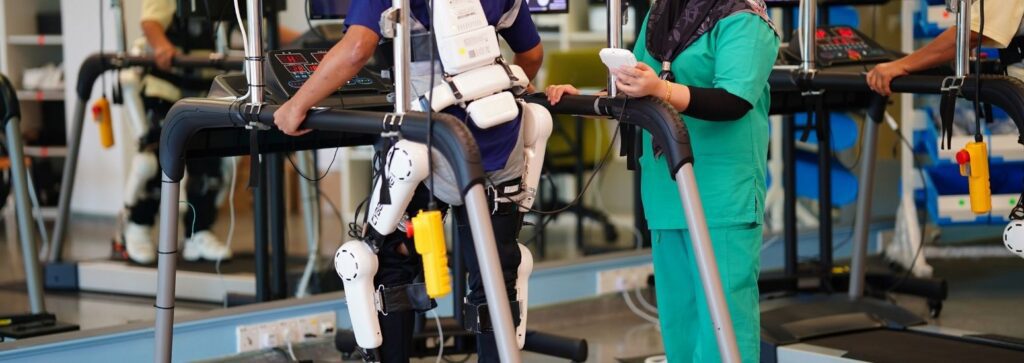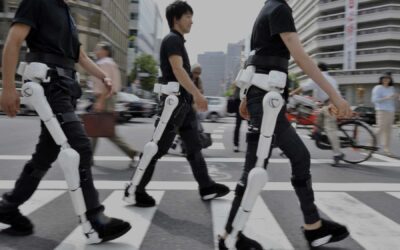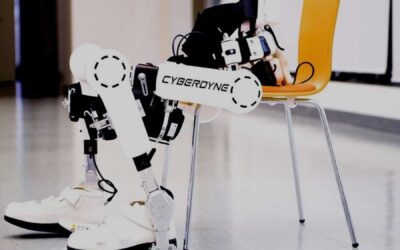Conditions such as spinal muscular atrophy, spinal bulbar muscular atrophy, muscular dystrophy, and congenital myopathy can result in the loss of the ability to walk. The use of the Wearable Cyborg™ HAL in Cyberdyne treatment has been shown to help improve the walking ability of these patients.
The Cyberdyne Treatment involves the use of the Wearable Cyborg™ HAL® to restore the functions of the user. This treatment is designed to address issues such as spinal cord injury, stroke, and neuromuscular diseases.
Therapy for neuromuscular disease

Cyberdyne HAL® is a robotic system that can enhance the physical abilities of users, particularly individuals with mobility challenges. By monitoring the user’s centre of gravity and movement direction, HAL enhances the user’s physical mobility.
Cyberdyne HAL® allows users to command movement using their thoughts. The robotic limb utilises technology similar to an electroencephalogram to translate signals from the user’s brain to the nerves beneath the skin and interpret these signals as commands. This process gradually reactivates the nerves responsible for voluntary movements. Eventually, the nerves regain enough strength for users to walk unassisted.
This represents a significant milestone for individuals with mobility impairments to walk independently without relying on HAL. The Wearable Cyborg™ HAL® is specifically designed to assist in improving the physical capabilities of patients.
Working with Neuromuscular diseases
Forms a positive cycle of signals
- Customised for a perfect fit
- Responds to the wearer’s intentions
- Aids in achieving self-sufficiency
Recovery from Neuromuscular

Rehabilitation robots used in physical therapy ensure that neuromuscular exercises are carried out accurately. The Wearable Cyborg™ HAL assists stroke patients by supporting their body weight, allowing them to participate for longer periods without getting tyred, while also measuring improvements and providing assessments.
The therapy with Wearable Cyborg™ HAL aims to progressively activate muscle impulses, creating an interactive neuronal feedback loop that leads to therapeutic success. Regular repetition during training helps improve the ability to walk and regain motion patterns.
This feedback therapy results in a significant increase in muscular strength. Patients affected by neuromuscular disease who continue to actively use their restored mobility in everyday life will maintain the progress they have made by the end of the neuromuscular feedback therapy.
Cyberdyne’s technology, utilising the Wearable Cyborg™ HAL, is an innovative treatment approach that enhances human brain-nerve-musculoskeletal functions by tapping into the body’s natural self-healing ability. Effective rehabilitation must be tailored to the specific skills the patient needs and be of sufficient intensity and duration to truly retrain the nerves and muscles involved.
The Hybrid Assistive Limb, or the Wearable Cyborg™ HAL, enables voluntary, user-driven ambulation through a neurologically-controlled system based on bioelectrical signals derived from the user. This allows for the repetition of physiologically accurate gait patterns, necessary for recovery in cases of neurologic motor deficit.
Log onto https://rehabmodalities.com/ to understand the science of motor functions and neuromuscular connections.



